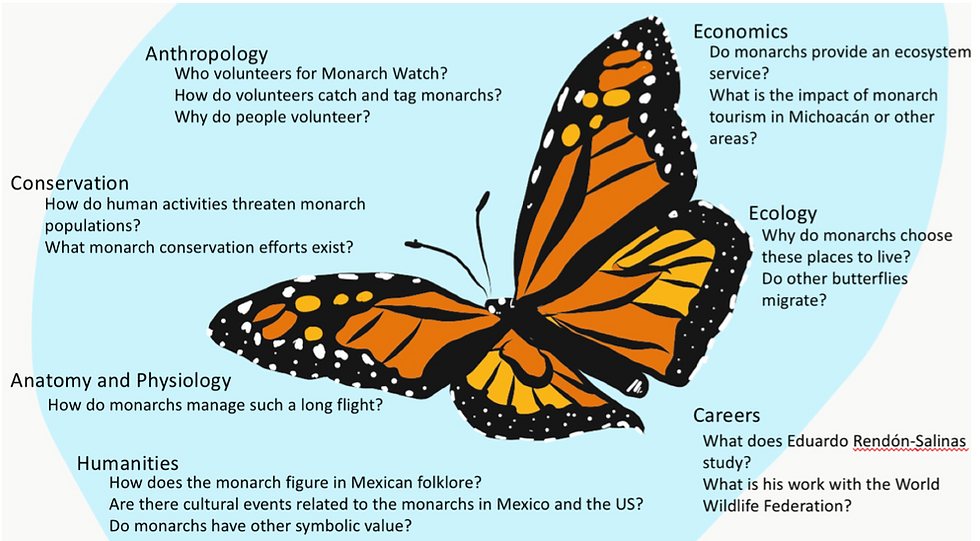Dolphin Sponging: A Mysterious Behavior - PBL Case Study
- Donna McDermott
- Dec 13, 2019
- 3 min read
Dolphin Foraging Case Study
📷

There is a population of bottlenose dolphins in Shark Bay, Australia. Researchers have observed that some dolphins carry a sponge in their mouths. The sponge covers the jaw and rostrum (i.e. snout) and is typically carried for a while. This behavior is called “sponging,” and the dolphins that do it are called “spongers.”
1. Why might a dolphin carry a sponge in its mouth? Discuss this question with a partner and work together to generate a list of 10 guesses. What are a few more specific questions you could investigate to try to understand this behavior?
Here are some more specific facts about dolphin behavior that may help you develop a hypothesis about this sponging:
Sponging behavior is typically performed by a small group of individuals who do it most of the time. In other words, there are spongers and non-spongers in the dolphin population.
Sponger dolphins spend considerably more time alone than non-sponger dolphins. Non-sponger dolphins spend more time congregated in social groups. It’s easier for male dolphins to find mates if they’re in a social group instead of alone.
Sponger dolphins dive for a longer amount of time on foraging trips.
Sponger females and non-sponger females have about the same number of offspring, in general.
Researcher documented sponging in 41 individuals: 29 females, 6 males, and 6 of unknown sex.
All spongers are born from a mother who is a sponger.
Of the offspring that were born to sponger females, 71% (10 females, 2 males, 5 of unknown sex) became spongers and 29% (one female, 6 males) did not.
Bottlenose dolphin mothers tend to bring fish to their (juvenile) offspring to feed them.
2. Discuss the above facts with a partner. Use these facts to build a more detailed hypothesis to explain why some dolphins exhibit sponging behavior. Your hypothesis should take the form: “ If dolphins sponge because [your prediction about sponging behavior], then [something you would be able to observe and measure about sponging which would support your prediction]”
3. Work with a partner to design an experiment or observational study that investigates your hypothesis (if you have different hypotheses, pick one of them.) Be sure to define the dependent and independent variables you’ll measure, the controls you’ll use, and a brief description of your methods.
4. What are some potential outcomes of your study/experiment? Define two potential outcomes and what they would indicate about sponging behavior.
<do not read below until you have completed above. Instructors, present these sections sequentially>
Here is what a group of researchers led by Dr. Janet Mann discovered about sponging:

📷“Sponges were apparently used while searching and typically not while chasing prey. Since the sponge cups over the rostra, it cannot be worn during prey capture. In 71 min of detailed observations of four foraging sponge-carriers (on separate days) when water clarity was exceptional, individuals swam slowly along sand-bottom habitats with a sponge on, slightly and intermittently disturbing the seafloor. When prey were apparently detected, the dolphins dropped the sponge, accelerated about 5–10 m and then probed the seafloor with their beaks. Occasionally rapid single breaths or leaps without the sponge were observed before returning to the same spot, indicating that prey may burrow in the sand. Subsequently, the dolphins retrieved sponges and began the search process again. Spongers occasionally surfaced with small fish (<20 cm) that were rapidly swallowed whole. Field observations, photographs and sponge-carrying by human divers (with a sponge cupped over one hand), revealed that the prey were probably small bottom-dwelling fish (e.g., Parapercis sp.).”
5. Here is a map of dolphins in Shark Bay.
📷

What predictions can you make about the differences between shallow, channel, and non-channel habitats?
6. Why do you think that some dolphins have adapted to use sponging? Reference this map and a key concept from the foraging video lecture to answer this question.
7. What are a few potential explanation for the sex-skew of this behavior (i.e. there are more female spongers than males)?
8. What are the proximate and ultimate costs and benefits of sponging?


Comments